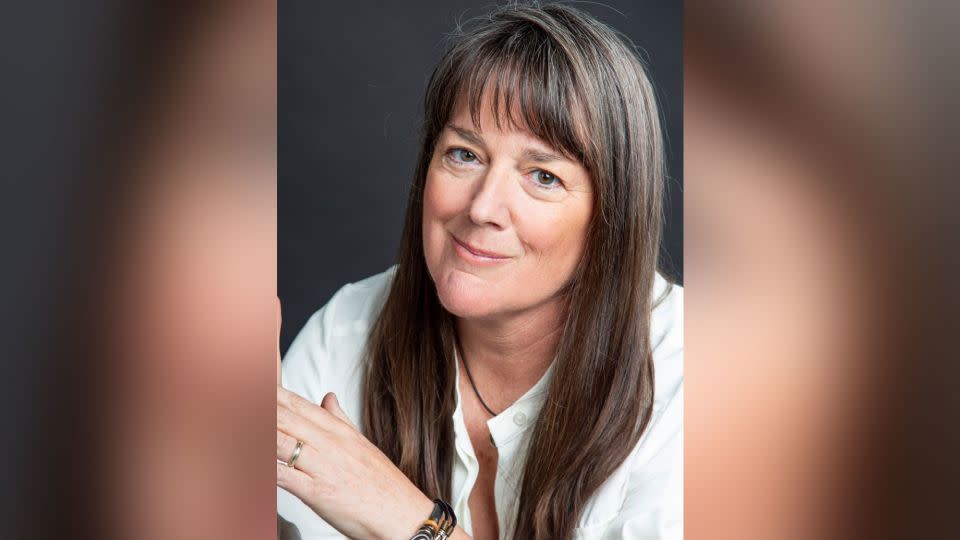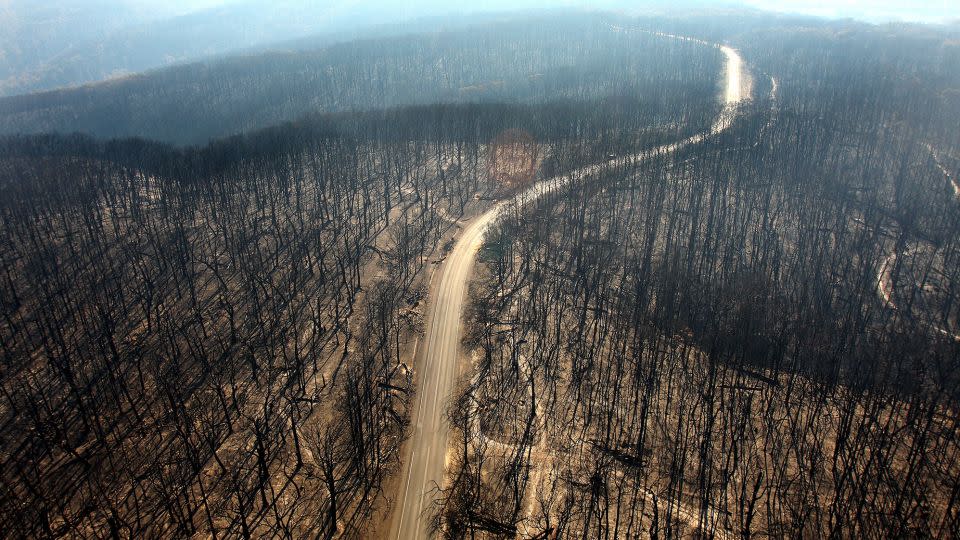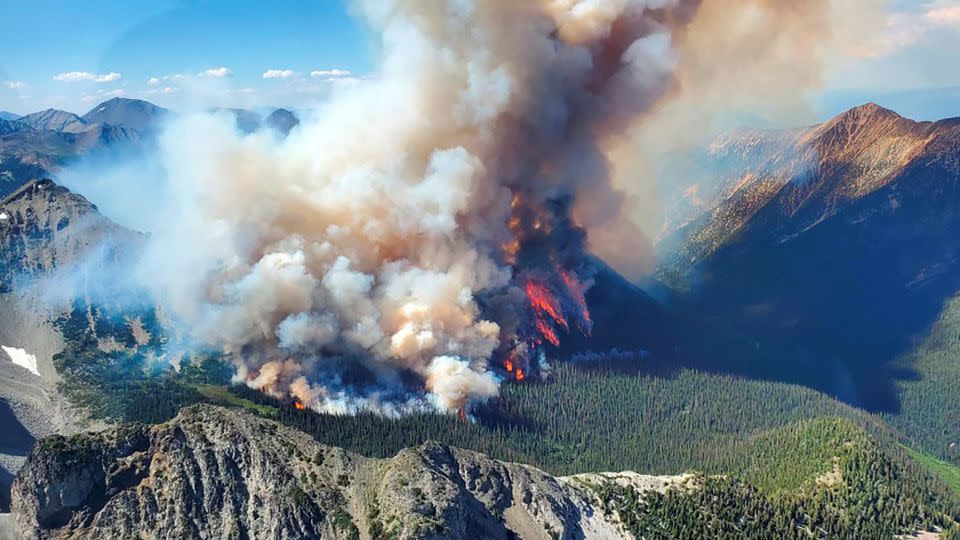Opinion: An American firefighter’s honest letter to Canada
Editor’s Note: Clare Frank served as the state of California’s first female chief of fire protection and is the author of “Burnt: A Memoir of Fighting Fire.” The views expressed in this commentary are her own. Read more CNN opinion here.
Dear Canada,
What I wouldn’t give to turn back the clock 40 years — to listen more closely to the harbinger wildfires and the future they foretold of catastrophes to come during my tenure as a firefighter in the United States.

Today, smoke rolling into the US from massive wildfires in provinces to the north makes me think this is Canada’s year to listen to its fires and pivot the way we should have.
One of our biggest errors: We failed to align building and infrastructure development with fire protection responsibilities.
In the US, most authority for this development rests with our local government entities, while the vast majority of wildland acres are protected by state and federal firefighting organizations.
This means agencies creating the wildland-urban interface or WUI — where human settlements meet the natural environment — are not ultimately responsible for protecting it. That’s a problem.
Let me give you an example. By my fifth year in firefighting, I’d seen plenty of wildfires and structure fires, and wildfires threatening structures. But I hadn’t yet seen anything like the Morse fire in Pebble Beach, California.
On the night of May 31, 1987, all hands were called. We responded at midnight from 100 miles away as the blaze consumed multimillion-dollar homes scattered throughout the Del Monte Forest — a coastal paradise thought safe under its daily blanket of fog.
But partiers had left an illegal campfire burning in an abutting botanical reserve. Onshore winds carried its flames to wood-shingled roofs that were approved because they matched nature’s décor. Mission accomplished; homes were now part of the flora fueling the nightmare in front of us.
As we convoyed in, a battalion chief instructed each engine company, “If it’s not savable, leapfrog to the next house. Be careful.” We backed down narrow driveways, then operated by headlamps and the fire’s glow as it traveled from rooftop to rooftop.
After a hard-fought 17-hour battle, the fire surrendered and left us to count its casualties: 15 firefighters injured, 31 homes destroyed — a big enough price tag for a wake-up call.
But instead of re-prioritizing home and human survivability over picturesque design, we yielded to a refrain that still gets sung every year: “We shall rebuild!” If you check the real estate listings today, you can find your dream home with a wood-shingled roof tucked into the Del Monte Forest.

Australia handled its growing WUI differently. By 1996, they’d enacted a national code for “bushfire-prone” areas. The code mandated building materials and construction methods that guard against ember infringement on homes, such as installing non-combustible roofing and enclosing the underside of eaves. They took an even harder stance after the tragic 2009 “Black Saturday” bushfires destroyed over 2,000 homes and claimed 173 lives. They amended the code, imposing very onerous restrictions on new homes in the highest-risk areas.
However strict, they managed to do it without neutering their state/territory governments by allowing performance-based alternatives — that is, innovative designs, materials and construction methods — that satisfied the intent of the national code.
Local entities were no longer the driver. Australia recognized that their wildfire threat loomed larger to their nation — if not the world — than competing local interests.
My advice: Canada, follow the Australian model.
Here’s another regret: We missed our chance to create cultural intolerance for reckless behavior. In the US, around 80% of wildfires are started by human carelessness. I love that Americans are filled with compassion to pardon. But by 1987 — the year I fought the Morse fire in Pebble Beach — Smokey Bear had been telling us to extinguish campfires for 43 years. Iconic posters pleaded, “Please! Be careful.” But when we weren’t, no consequence ensued. So now we have a pervasive lack of accountability.

Case in point: In 2020, a California utility company whose powerlines touched off the deadliest wildfire in the state’s history, pleaded guilty to 84 counts of manslaughter. Under the weight of financial obligations (a mere $4 million for the criminally caused fire, but $30 billion in settlements related to previous wildfires), the company filed for bankruptcy. And after emerging from its Chapter 11 claim, it’s still in business as one of the largest for-profit utility companies in the US. (The reorganized company renegotiated settlements to fire victims with a blend of dollars and stock shares and has pledged to improve its fire safety practices.)
Canada’s split has been roughly 50/50 between human and naturally caused fires. With record population growth, that split is changing; humans are pulling ahead. When considering what national action it can take to stem these starts, I’m begging: do more than say, “Please.”
Lastly, we made a grave mistake in thinking we could extinguish our way out of the mounting wildfire problem. Aggressive suppression has turned landscapes that need to burn into overgrown bomb-like tinderboxes. This is not the fault of boots-on-the-ground firefighters protecting lives, homes and habitats. It’s the fault of a body politic that won’t equally prioritize fuel management in the wildlands (using mechanical treatments and off-peak prescribed burning and indigenous cultural fires).
It’s all of us, from environmentalists who don’t want a twig disturbed, to asthmatics concerned about any smoke, to homeowners prioritizing aesthetics and off-the-grid freedom to bean counters relentlessly trying to conserve government dollars. In budget shortfall years, fire prevention always took the hit in fire departments. Without exigency, it seemed like a reasonable gamble. A recent Reuters report suggests that this misperception and imbalance is a global issue, finding that Greece, Spain, Portugal, Italy and France spend as much as 80% of available funds on suppression and just 20% on prevention.
In this banner year, some are crying for Canada to form a national fire department. But pouring money into building fire stations across the country won’t solve the problem. (Maybe beefing up air support and national coordination services could help, but that’s a different discussion.)
Simply not repeating our mistakes will do more. Canada can bolster its national role by creating resilient homes with mandatory WUI building codes, a fierce campaign to curb human-caused fires, and a unified voice that promotes beneficial fuel management in the WUI.
You got this, Canada.
Love, US.
For more CNN news and newsletters create an account at CNN.com

